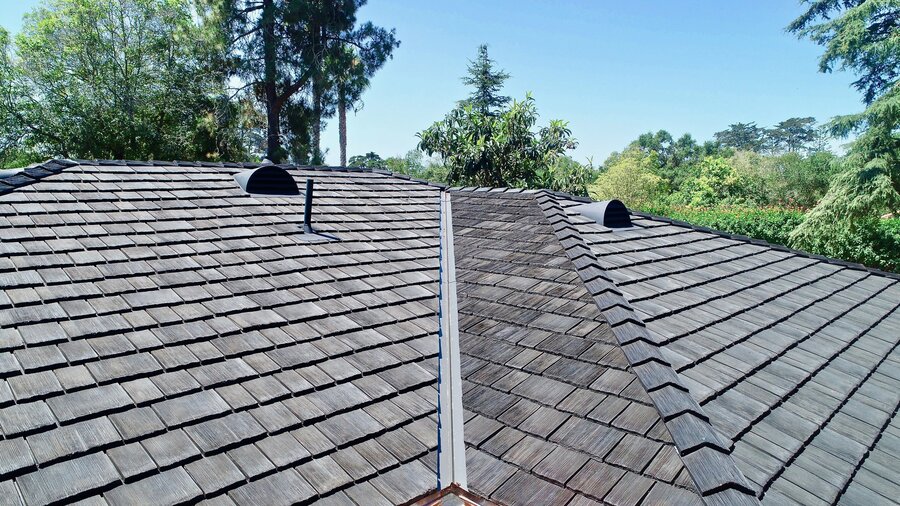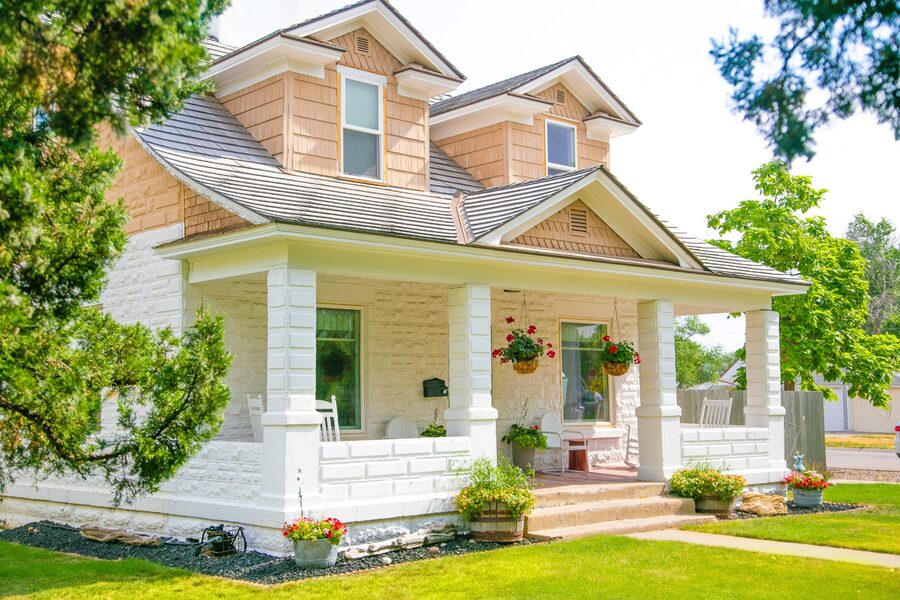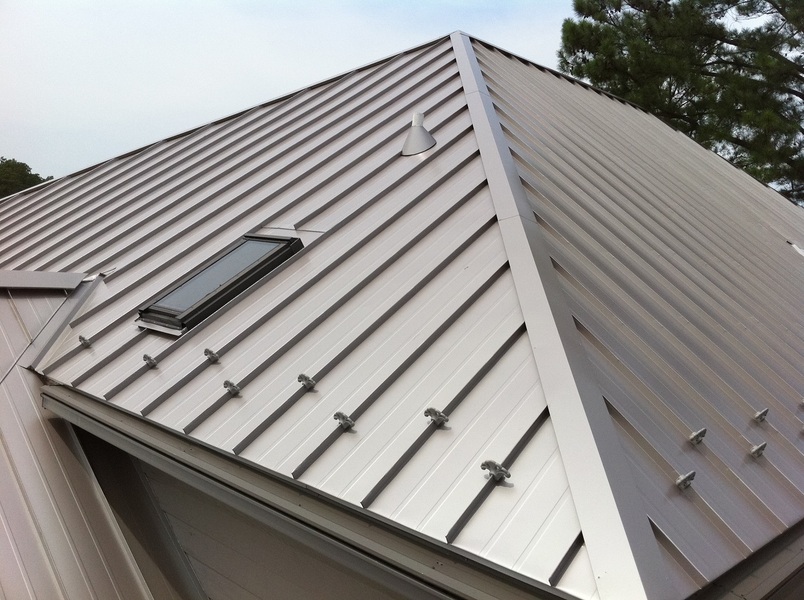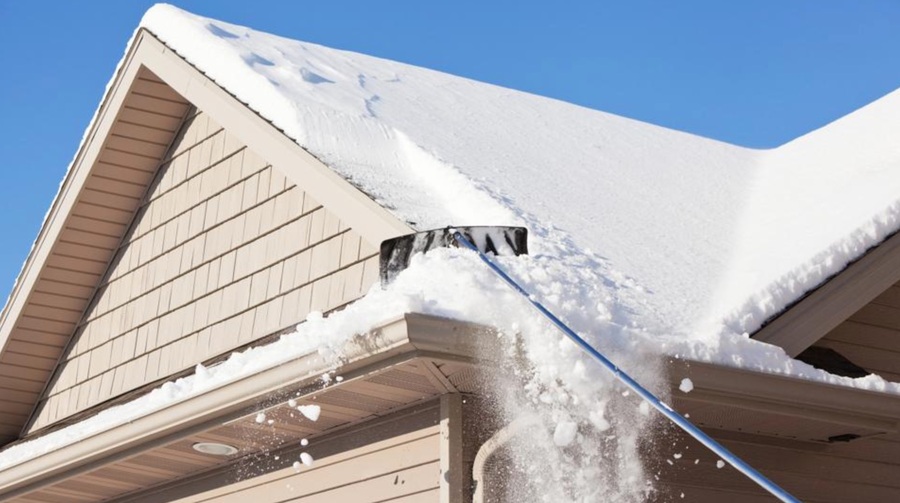6 Ways Energy-Efficient Roofing Can Save Money and the Environment
6 Ways Energy-Efficient Roofing Can Save Money and the Environment

In today’s world, where sustainability and cost-efficiency are key considerations, energy-efficient roofing has emerged as a smart solution. As a leading Cedar Rapids roofer, we understand the importance of reducing energy consumption and benefiting the environment. In this article, we will explore six ways energy-efficient roofing can save both money and the environment.
Reduced Energy Consumption
Energy-efficient roofing materials are designed to minimize heat transfer, keeping the building cooler in the summer and warmer in the winter. These roofs can significantly lower energy consumption by reducing the need for artificial heating and cooling. With decreased reliance on HVAC systems, businesses, and homeowners can save substantial amounts on their energy bills while also reducing their carbon footprint.
Enhanced Insulation
Energy-efficient roofs are equipped with advanced insulation materials and techniques. These features help to prevent air leakage and maintain a consistent indoor temperature. Energy-efficient roofing provides better thermal insulation by effectively trapping heat during colder months and repelling heat during hotter months. As a result, heating and cooling systems can operate more efficiently, reducing energy usage and lowering utility bills.
Cool Roof Technology
Cool roof technology is an innovative approach to energy-efficient roofing. It involves using reflective materials and coatings that can reflect a significant portion of the sun’s rays, reducing the absorption of heat by the roof. Cool roofs help decrease the demand for air conditioning by keeping the building cooler, particularly in hot climates. This, in turn, lowers energy consumption and substantially saves cooling costs.
Longevity and Durability
Energy-efficient roofing systems are often built to last. They are designed with durable materials that can withstand harsh weather conditions, including extreme temperatures, heavy rain, and high winds. By investing in an energy-efficient roof, property owners can avoid frequent repairs and replacements, which can be costly. Additionally, the extended lifespan of these roofs reduces the amount of waste generated and the environmental impact associated with manufacturing and disposing of roofing materials.
Potential Tax Incentives and Rebates
Governments and local authorities are increasingly incentivizing energy-efficient practices, including installing energy-efficient roofing. Depending on your location, you may be eligible for tax credits or rebates when you opt for energy-efficient roofing solutions. These financial incentives can offset the initial investment, making energy-efficient roofing more affordable. It is worth exploring the available incentives in your area to maximize cost savings while contributing to a sustainable future.
Environmental Benefits
Energy-efficient roofing not only saves money but also helps to preserve the environment. By reducing energy consumption, these roofs lower greenhouse gas emissions and dependence on non-renewable energy sources. Additionally, cool roofs mitigate the urban heat island effect, a phenomenon where cities experience higher temperatures due to concentrated heat absorption. Individuals and businesses actively contribute to a greener and more sustainable planet by choosing energy-efficient roofing.
Comparing Epoxy to Other Materials
When it comes to roofing materials, there are various options available, each with its own set of advantages and disadvantages. In this section, we will compare epoxy roofing to other common roofing materials to help you decide the best choice for your needs.
Epoxy vs. Asphalt Shingles
Asphalt shingles are one of the most popular roofing materials due to their affordability. However, when comparing them to epoxy roofing, there are several key differences to consider. Epoxy roofs offer superior durability and longevity, often lasting two to three times longer than asphalt shingles. Additionally, epoxy roofs have better resistance to UV rays and are less prone to cracking and warping over time. While asphalt shingles may be cheaper upfront, the long-term cost savings and extended lifespan of epoxy roofing make it a more cost-effective and durable option.
Epoxy vs. Metal Roofing
Metal roofing has gained popularity for its durability and energy efficiency. While both epoxy and metal roofing offers excellent longevity, epoxy roofs have the advantage of being seamless, meaning they have no joints or seams that could potentially become weak points over time. On the other hand, metal roofs may require periodic maintenance to prevent rusting and ensure their continued performance. Epoxy roofing also provides better insulation and can reduce energy consumption, whereas metal roofs may require additional insulation to achieve similar benefits.
Epoxy vs. Tile Roofing
Tile roofing is known for its aesthetic appeal and longevity. However, it is worth noting that tile roofs can be pretty heavy, requiring additional structural support during installation. Epoxy roofs, being lightweight, are easier to install and put less stress on the building’s structure. Tile roofs may also be more susceptible to cracking and damage from extreme weather conditions than epoxy roofs. While tile roofs offer a classic look, epoxy roofs can be customized to mimic the appearance of various materials, including tiles, without the associated weight and maintenance requirements.
Epoxy vs. Green Roofs
Green or vegetative roofs are an eco-friendly roofing option that covers the roof with vegetation and a waterproofing membrane. While green roofs provide excellent insulation and contribute to environmental sustainability, they require specialized maintenance and can be expensive to install and maintain. Epoxy roofs, on the other hand, offer energy efficiency and environmental benefits without the complexity and ongoing maintenance of green roofs. Epoxy roofs can be combined with cool roof technology to enhance energy efficiency further and reduce the urban heat island effect.
Energy-efficient roofing offers many benefits for both the environment and your pocket. With reduced energy consumption, enhanced insulation, and cool roof technology, these roofs significantly save energy bills while minimizing environmental impact. The longevity and durability of energy-efficient roofing systems ensure long-term cost savings and reduce waste generation.
Moreover, the availability of tax incentives and rebates makes energy-efficient roofing even more attractive for property owners. As a leading Cedar Rapids roofer, we encourage you to explore energy-efficient roofing options and make a positive difference for your finances and the planet.
Key Takeaways
- Energy-efficient roofing can save money and benefit the environment in multiple ways.
- Reduced energy consumption leads to lower utility bills and a reduced carbon footprint.
- Enhanced insulation keeps buildings cooler in summer and warmer in winter, reducing the need for artificial heating and cooling.
- Cool roof technology reflects sunlight, reducing the demand for air conditioning and lowering energy consumption.
- Energy-efficient roofs are durable, long-lasting, and require fewer repairs and replacements.
- Tax incentives and rebates may be available to offset the initial investment in energy-efficient roofing.
- Energy-efficient roofing helps to reduce greenhouse gas emissions and mitigate the urban heat island effect.
- Epoxy roofing offers advantages over other materials in terms of durability, longevity, seamless installation, and better insulation.





